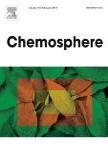版权所有:内蒙古大学图书馆 技术提供:维普资讯• 智图
内蒙古自治区呼和浩特市赛罕区大学西街235号 邮编: 010021

作者机构:Section of Bioresources and Process Engineering Department of Chemistry and Bioscience Aalborg University Fredrik Bajers Vej 7H Aalborg9220 Denmark AIMPLAS Instituto Technológico del Plástico València Parc Tecnològic C/Gustave Eiffel 4 Valencia Paterna46980 Spain Plastics and Packaging Technology Danish Technological Institute Taastrup2630 Denmark Department of Materials and Production Aalborg University Fibigerstræde 16 Aalborg9220 Denmark
出 版 物:《Chemosphere》 (Chemosphere)
年 卷 期:2025年第373卷
页 面:144151页
核心收录:
学科分类:0830[工学-环境科学与工程(可授工学、理学、农学学位)] 080103[工学-流体力学] 0817[工学-化学工程与技术] 08[工学] 0801[工学-力学(可授工学、理学学位)]
基 金:This work was supported by the H2020 UPLIFT project [Grant Agreement no. 953073]. The authors are thankful to Felice Quartinello and Klemens Kremser for providing the mixed plastic streams (MW2 and MW3) Donghong Yu for granting the access to DSC and FTIR and helping with the discussion and Virender Kumar for his guidance on genomic DNA extraction
主 题:Plasma applications
摘 要:Polyolefins (PO)1 are the most common consumer plastics, constituting about half of plastic waste. This work investigated the process combining physicochemical pretreatment and PO-enriched mixed microbial consortia (MMCs) on biodegrading European real mixed plastic waste. The MMCs, acclimatized on PO powders, were enriched with strains that could use PO, primarily dominated by the genus Rhodanobacter. Several pretreatment methods were investigated on pure polyethylene (PE) and polypropylene (PP). UVC combined with Fenton s reagent was found to be the best pretreatment process for pure PO, increasing the total oxidative indices of PE and PP by 135 and 21 times, respectively, and decrease the total crystallinity of PP by 2.3 times (but not PE), compared to the untreated ones. Maximum 7.7% and 16.3% weight reductions were achieved after MMCs biodegradation of UVC-Fenton-treated PE and PP powders (80 μm), with a 4.3- and 27.2-times improvement from the untreated ones. Selected pretreatments and MMCs were then applied to real mixed plastic waste and post-consumer multilayers from 10 different streams. The highest weight reductions after 30-days biodegradation were obtained using mixed plastic reject from a biogas plant (MW2) followed by the unrecyclable mixed plastic waste from a Danish municipality (MW1), with a reduction of 36.8% and 30.0% using radio frequency (RF) oxygen plasma pretreatment, respectively. Integration of ultrasonic irradiation with atmospheric pressure plasma treatment increased the biodegradation of MW1 to 39.4%. This study addressed the bottleneck of slow biodegradation of recalcitrant plastics, laying down the basis for future development of biotechnological recycling of unrecyclable plastic fractions. © 2025 The Author(s)